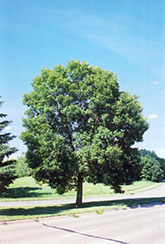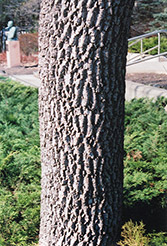>> Home
Height: 49 feet
Spread: 36 feet
Sunlight:
![]()
Hardiness Zone: 2b
Other Names: Red Ash
Description:
Probably the most rugged, versatile and planted shade or street tree in colder climates, and with good reason; low maintenance, clean, shapely habit of growth, supremely hardy and often good fall color; seeds can be messy, better cultivars available
Ornamental Features
Green Ash has rich green deciduous foliage on a tree with an oval habit of growth. The compound leaves turn an outstanding yellow in the fall.
Landscape Attributes
Green Ash is a deciduous tree with a shapely oval form. Its average texture blends into the landscape, but can be balanced by one or two finer or coarser trees or shrubs for an effective composition.
This tree will require occasional maintenance and upkeep, and should only be pruned in summer after the leaves have fully developed, as it may 'bleed' sap if pruned in late winter or early spring. Deer don't particularly care for this plant and will usually leave it alone in favor of tastier treats. Gardeners should be aware of the following characteristic(s) that may warrant special consideration;
- Messy
- Insects
Green Ash is recommended for the following landscape applications;
- Shade
- Windbreaks and Shelterbelts
Planting & Growing
Green Ash will grow to be about 49 feet tall at maturity, with a spread of 36 feet. It has a high canopy with a typical clearance of 7 feet from the ground, and should not be planted underneath power lines. As it matures, the lower branches of this tree can be strategically removed to create a high enough canopy to support unobstructed human traffic underneath. It grows at a fast rate, and under ideal conditions can be expected to live for 70 years or more.
This tree should only be grown in full sunlight. It is very adaptable to both dry and moist locations, and should do just fine under average home landscape conditions. It is considered to be drought-tolerant, and thus makes an ideal choice for xeriscaping or the moisture-conserving landscape. It is not particular as to soil type or pH, and is able to handle environmental salt. It is highly tolerant of urban pollution and will even thrive in inner city environments. This species is native to parts of North America.


